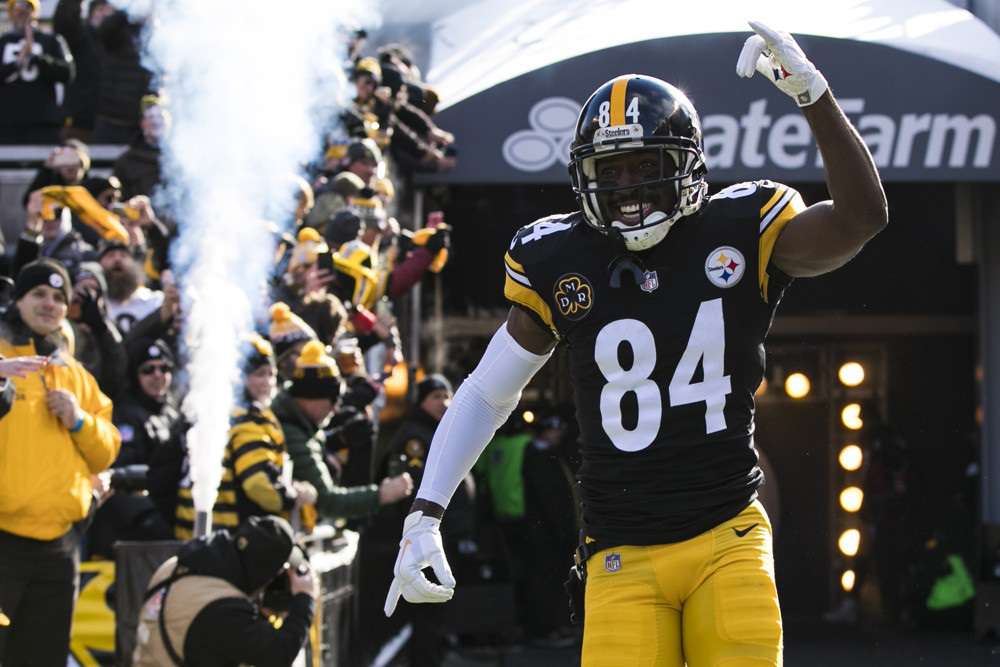
For several years, the term “Zero RB” has made the rounds in fantasy circles. A Zero RB drafting strategy is based on the theory that running backs are more prone to injury due to their heavy workloads and thus higher risks as early fantasy picks. Zero RB proponents will often wait until the fifth or sixth round before targeting a running back. These fantasy players will stack their lineups with wide receivers in the early rounds and wait to select running backs with high upside later in the draft.
The idea behind this is that wide receivers are more stable and thereby easier to project. The physical nature of the running back position leads to many serious injuries, making running backs a more dicey commodity. But is this, in fact, the case?
The Positives of a Zero RB Drafting Strategy
Zero RB is essentially about two things – not wasting a high draft pick on a player who is likely to get injured and/or bust, and finding that diamond in the rough in the later rounds who can return premium value. In other words, wide receivers selected early tend to have a higher floor than running backs, and running backs selected late have a higher ceiling than wide receivers. The Zero RB crowd wins on both fronts. Let’s tackle the second point first.
Because running backs usually take more hits and are more susceptible to injury, it is more likely for a receiver who was drafted in the top-24 finishing to return top-12 value. Here are the number of top-12 finishes that top-24 draft picks have produced at each position since 2008. The ADP data is courtesy of FantasyFootballCalculators.com.
Number of Top-24 Draft Picks Who Finished as Top-12 at Their Position
[table “185” not found /]
In no season over the last decade have there been more top-12 finishes among running backs taken as the first 24 drafted than wide receivers. Overall, 35.8 percent of running backs drafted as top-24 backs have produced top-12 seasons compared to 42.0 percent of wide receivers. Logic would also dictate that because of this, there is a greater likelihood of a running back chosen later in the draft vaulting his way up to RB1 value since there are more “open spots” for him to find. The probability is indeed greater for a running back to be drafted outside the top-24 and finish as a top-12 back than it is for a wide receiver.
You’re doing all the prep, now make it pay off! Head on over to Fantrax to start or join a Fantasy Football league. At Fantrax you can draft a team 364 days a year… Sorry, we had to give the IT guy one day off.
Another reason Zero RB has become more prevalent in recent years is that many fantasy players were frequently burned by having early draft picks lost on guys who did not earn their value. The “floor” of running backs drafted in the early rounds is much lower due to the greater injury risk the position entails. And over the last decade, the numbers prove this to be true as well.
Number of Top-12 Draft Picks Who Finished as Top-24 Fantasy Players
[table “186” not found /]
In eight of the last nine years, receivers drafted in the top-12 were more likely than their running back counterparts to finish the year as a fantasy starter. 82.5 percent of top-12 wide receivers finished as starters, compared to just 70 percent of running backs. This data supports the theory that Zero RB is a perfectly viable drafting strategy.
The Caveat
We have established that there are definitely merits to a Zero RB strategy based on wide receivers, by and large, having both a higher theoretical floor and more reliable ceiling. However, this experiment is based on standard scoring. And we must remember that in most instances, elite running backs have a much higher ceiling than elite wideouts do in standard leagues. Here are the average total fantasy points of the top-12 yearly finishers at running back and wide receiver over the last ten years.
RB1 vs. WR1 Scoring, 2008-2017
[table “187” not found /]
In the early stages of this decade, elite wide receivers began to narrow the gap between themselves and elite running backs. This trend continued for several years and came to a head in 2015 when wideouts outproduced backs at the highest level. However, based on the numbers since, it seems safe to say that the 2015 season is an outlier in terms of running back production.
Conclusion
In this exercise, we’ve seen numbers that seemingly argue both for and against Zero RB. So where does that leave us?
The truth is that there is no blanket “hack” for maximizing value in fantasy drafts. A Zero RB method of drafting is certainly a potentially winning strategy and is much more than a passing fad. But it is by no means a foolproof blueprint to victory, either. I feel that a Zero RB drafting strategy may actually be a safer method than blindly picking running backs early. The numbers show that you are more likely to have an ROI of equal or greater value by choosing a wide receiver early rather than a running back. However, elite running backs still offer the most bang for your buck if they can remain upright. And the odds of them busting are not that much higher than those of a wide receiver failing to live up to his draft stock.
As with every other draft strategy, there are times when a Zero RB strategy will work and times when it will not. If you employed a Zero RB strategy last season and selected Antonio Brown, Brandin Cooks, and Keenan Allen in Rounds 1-3, you probably did pretty well for yourself. If you drafted Odell Beckham, Jordy Nelson, and Terrelle Pryor, not so much. The same holds true for those who drafted Mark Ingram and Frank Gore over, say, Mike Gillislee and Terrance West. The two biggest running back bargains of 2017 (Alvin Kamara and Dion Lewis) could have been had regardless of whether one was using a Zero RB strategy or a more vanilla, standard method of drafting.
Zero RB Targets for 2018 Fantasy Football
If you are planning on going Zero RB in 2018, there are once again a plethora of options available. I personally gravitate more towards a Zero RB plan in PPR leagues, where a back does not need a lot of rushing volume to justify an early to mid-round pick. In my opinion, backs like Tarik Cohen, Chris Thompson, and Duke Johnson are guys you can target in the middle rounds who could pay great dividends for those looking to use a Zero RB drafting model.
If you don’t want to go the receiving/third-down back route, there are several other running backs who have the potential to make investors look smart this season. Rookies Sony Michel, Royce Freeman, and Ronald Jones can all be had in Round 5, with Kerryon Johnson and Nick Chubb available in Rounds 7 and 8, respectively. If you’re looking even deeper, Latavius Murray, Nyheim Hines, and Matt Breida are some of my favorite late-round fliers at running back.
 Ready to amp up your Fantasy Football prep even more? Check out Full 60 Fantasy Football, where Joe Pisapia, Scott Bogman, and The Welsh bring the goods every week.
Ready to amp up your Fantasy Football prep even more? Check out Full 60 Fantasy Football, where Joe Pisapia, Scott Bogman, and The Welsh bring the goods every week.
